Text
oh no i just want to play my stupid games no stupid prizes for me thanks
17K notes
·
View notes
Text
Okay I Could do work but instead I'm going to write about the time shostakovich had the worst time in america
(So, despite the clickbaity title, this will be more of a serious post. I wrote about the topic a few years ago on Reddit , and I'll be citing a lot of the same sources as I cited there, because there are some good ones, along with some new information I've gathered over the years. This was going to be a video essay on my youtube channel, but I sort of kept putting it off.)
The Scientific and Cultural Congress for World Peace, held in New York in 1949, is a particularly fascinating event to study when it comes to researching Shostakovich because of just how divisive it was. True, the event itself, which only lasted a few days, doesn’t get as much spotlight as the Lady Macbeth scandal or the posthumous “Shostakovich Wars,” but you’ll find that when reading about the Peace Conference, as I’ll be referring to it here for the sake of brevity, many of the primary accounts of it never quite tell the full story. The Peace Conference was held during a volatile time, both in Soviet and American politics, as Cold War tensions were on the rise and an ideological debate between capitalism and communism gradually extended to become the focus of seemingly every factor of life- not just politics and economics, but also the sciences, culture, and the arts.
While artists on both sides were frequently cast in different roles in order to create or destroy the image of Soviet or American cultural and ideological superiority, the image either government sought to cast was sometimes contradictory with the sentiments of the artists themselves. For instance, while the CIA-founded Congress of Cultural Freedom (CCF) sent African American jazz musician Louis Armstrong on various tours around the world to promote jazz as American culture and dispel perceptions of racism in America, Armstrong canceled a trip to the Soviet Union in order to protest the use of armed guards against the integration of Black students at Central High School in Little Rock, Arkansas, in 1957. Meanwhile, the Soviet government’s use of international diplomatic missions by artists as cultural warfare also reflected a desire to portray themselves as the dominant culture, despite the tensions and complications that existed for artists at home. When the Soviet Union sent Dmitri Shostakovich to New York in March 1949 for the Peace Conference, such cultural contradictions are why the conference occurred the way it did, and why Shostakovich’s image has received so much controversy, both in Russia and in the west.
If you’re familiar with Soviet history, you may be familiar with the term Zhdanovshchina, which refers to a period of time between 1946 and 1948 in which Andrei Zhdanov, the Central Committee Secretary of the Soviet Union, headed a number of denunciations against prominent figures in the arts and sciences. Among musicians, Shostakovich was one of the most heavily attacked, likely due to his cultural standing, with many of his pieces censored and referred to as “formalist,” along with his expulsion from his teaching positions at the Moscow and Leningrad conservatories. During this time, Shostakovich often resorted to writing film and ideological music in order to make an income.
Meanwhile, in the United States, as fears of nuclear war began accumulating, peace movements between the two superpowers were regarded more and more as pro-Communist, an opinion backed by the House Committee of Un-American Activities (HUAC). The Waldorf-Astoria Peace Conference, to be held from March 25-27th 1949, was organized by the National Council of Arts, Sciences, and Professions, a progressive American organization, and was to feature speeches held by representatives of both American and Soviet science and culture. Harlow Shapely, one of the conference’s organizers, stated that he intended for the conference to be “non-partisan” and focused on American and Soviet cooperation.
On the 16th of February, 1949, Shostakovich was chosen to be one of the six Soviet delegates to speak at the conference. This was largely due to his fame in the west, where both his Seventh and Eighth Symphonies met a mostly positive reception. Shostakovich initially did not want to go to the conference, stating in a letter to the Agitprop leader Leonid Ilichev that he was suffering from poor health at the time and wasn’t feeling up to international travel and performances. He also said that if he were to go, he wanted his wife Nina to be able to accompany him, but he ended up being sent to New York without any members of his family- perhaps to quell concerns of defection (recall the amount of artists who defected around the time of the 1917 revolution, including notable names such as Rachmaninov and Heifetz).
Stalin famously called Shostakovich on the phone that same day to address the conference, and again, Shostakovich told him he couldn’t go, as he was feeling unwell. Sofia Khentova’s biography even states that Shostakovich actually did undergo medical examinations and was found to be sick at the time, but Stalin's personal secretary refused to relay this information. Shostakovich's close friend Yuri Levitin recalls that when Stalin called Shostakovich on the phone to ask him to go to the conference (despite the fact he had been chosen to go in advance), Shostakovich offered two reasons as to why he couldn't go- in addition to his health, Levitin claims that Shostakovich also cited the fact that his works were currently banned in the Soviet Union due to the Zhdanov decree, and that he could not represent the USSR to the west if his works were banned. While accounts of the phone call vary, the ban on Shostakovich's works was indeed lifted by the time he went to New York for the conference.
When Shostakovich arrived in New York, general anti-Communist sentiment from both Americans and Soviet expatriates, as well as media excitement, resulted in a series of protests in front of the Waldorf Astoria hotel where the conference was to be held, with some of the protesters directly referencing Shostakovich himself, as he was the most well-known Soviet delegate on the trip. In 1942, Shostakovich's 7th ("Leningrad") Symphony was performed in the United States under Toscanini and the NBC Symphony Orchestra to high acclaim, helping to promote the idea of allyship with the Soviet Union in the US during the war, and Americans were aware of the Zhdanov denunciations in 1948, as well as the previous denunciations that Shostakovich had suffered in 1936 as a result of the scandal surrounding his opera "Lady Macbeth of the Mtsensk District." So by 1949, many people in American artistic circles had a sympathetic, if not completely understanding, view of Shostakovich during the birth of the Cold War. They viewed him as a victim of Communism and the Soviet state, who was forced to appease it in order to stay in favor, and as a result, could potentially voice his dissent with the system once in the west. Pickets visible in footage from the protests outside the Waldorf Astoria carried slogans such as "Shostakovich, jump thru [sic] the window," a likely reference to Oksana Kosyankina, a Soviet schoolteacher who had reportedly jumped out of a window in protest (although the details of this story would be found to be highly dubious). Meanwhile, another sign read "Shostakovich, we understand!," a statement that would prove to be deeply ironic. At the conference itself, Shostakovich did not jump through the window, nor did he attempt any form of dissent. Instead, an interpreter read through a prepared speech as he sat on stage in front of a crowd of about 800. The speech praised Soviet music, denounced American "warmongering," and claimed that Shostakovich had accepted the criticism of 1948, saying it "brought his music forward." Many in the audience could see that Shostakovich was visibly nervous- he was "painfully ill at ease," and Nicholas Nabokov (brother of the writer Vladimir Nabokov) remarked that he looked like a "trapped man." Arthur Miller recalled he appeared "so scared." As they noticed how nervous he looked, some of those in attendance sought to make a demonstration of him in order to illustrate Soviet oppression in contrast to the freedoms supposedly enjoyed by American artists, asking him intentionally provocative questions that they knew he would not be able to answer truthfully. From Nicholas Nabokov:
After his speech I felt I had to ask him publicly a few questions. I had to do it, not in order to embarrass a wretched human being who had just given me the most flagrant example of what it is to be a composer in the Soviet Union, but because of the several thousand people that sat in the hall, because of those that perhaps still could not or did not wish to understand the sinister game that was being played before their eyes. I asked him simple factual questions concerning modern music, questions that should be of interest to all musicians. I asked him whether he, personally, the composer Shostakovich, not the delegate of Stalin’s Government, subscribed to the wholesale condemnation of Western music as it had been expounded daily by the Soviet Press and as it appeared in the official pronouncements of the Soviet Government. I asked him whether he, personally, agreed with the condemnation of the music of Stravinsky, Schoenberg, and Hindemith. To these questions he acquiesced: ‘Yes,’ he said, ‘I completely subscribe to the views as expressed by … etc….’ When he finished answering my questions the dupes in the audience gave him a new and prolonged ovation.
During the discussion panel on March 26th, music critic Olin Downes delivered yet another provocative statement towards Shostakovich:
I found both of your works [the 7th and 8th Symphonies] too long, and I strongly suspected in them the presence of a subversive influence—that of the music of Gustav Mahler.
For Shostakovich, and anyone knowledgeable of Soviet politics and music at the time, it's not hard to see why Downes had explicitly mentioned Mahler. Gustav Mahler (1860-1911) was a highly influential composer when it came to 20th century western music, particularly with regards to the avant-garde movement pioneered by the Second Viennese School- Arnold Schoenberg, Anton Webern, and Alban Berg. Shostakovich was also heavily influenced by Mahler, but such influences were frowned upon in the mid-30s to 50s Soviet Union. Mahler's style was decidedly more "western," and it's potentially for this reason that Shostakovich's 4th Symphony- perhaps his most "Mahlerian," was withdrawn from performance before its premiere in 1936, having followed the "Lady Macbeth" denunciations. To tie Shostakovich to Mahler would be to point out his direct western influences, while he was being made to issue statements that rejected them. During his speech, Shostakovich made statements criticizing Stravinsky and Prokofiev- two composers who had emigrated and adopted western-inspired neoclassical styles (although Prokofiev returned to the Soviet Union in 1936). Stravinsky had taken insult to Shostakovich's comments against him, and carried an animosity towards Shostakovich that appeared once again in their meeting in 1962, according to the composer Karen Khachaturian.
On the last day of the conference, March 27th, Shostakovich performed the second movement of his Fifth Symphony on piano at Madison Square Garden to an audience of about 18,000, and had received a massive ovation, as well as a declaration of friendship signed by American composers such as Bernstein, Copland, Koussevitzky, and Ormandy. He returned to the Soviet Union on April 3.
In addition to the 1948 denunciations, in which Shostakovich was pressured to make public statements against his own works, the likely humiliation he endured at the 1949 conference played a role in cementing his dual "public" and "private" personas. For the rest of his life, Shostakovich displayed mannerisms and characteristics at official events that were reportedly much different from those he displayed among friends and family. For the public, and for researchers after his death, it became difficult to determine which statements from him reflected his genuine sentiments, and which ones were made to appease a wider political or social system.
Both the Soviet Union and the west had treated Shostakovich as a means of legitimizing their respective ideologies against one another, a trend that continued long after his death in 1975 and the fall of the USSR in 1991. The publication of his purported memoirs, "Testimony," allegedly transcribed by Solomon Volkov, fueled this debate among academics and artists, becoming known as the "Shostakovich wars." The feud over the legitimacy of "Testimony," however, stood for something much larger than the credibility of an alleged historical document- as historians and musicologists debated whether or not it was comprised of Shostakovich's own words and sentiments towards the Soviet Union, its political systems, and its artistic spheres, they were largely seeking to prove the credibility of their stances for or against Soviet or western superiority. "Testimony" helped evolve the popular western view of Shostakovich as well, from a talented but helpless puppet at the hands of the regime, to a secret dissident bravely rebelling against the system from inside.
Modern Shostakovich scholars, however, will argue that neither of these views are quite true- as more correspondence and documents come to light, and more research is conducted, a more complete view of Shostakovich has been coming into focus over the past decade or so. Today, many academics tend to view Shostakovich and the debate over his ideology with far more nuance- not as a cowardly government mouthpiece or as an embittered undercover rebel, but as a multifaceted person who made difficult decisions, shaped by the varying time periods he lived in, whose actions were often determined by the shifting cultural atmospheres of those time periods, along with his own relationships with others and the evolution of his art. We can be certain Shostakovich did not approve of Stalin's restrictions on the arts- his posthumous work "Antiformalist Rayok," among other pieces of evidence from people he knew, makes that very clear- but many nuances of his beliefs are still very much debated. There has also been a shift away from judging Shostakovich's music based on its merit as evidence in the ideological dispute, and rather for its quality as artwork (something I'm sure he would appreciate!). As expansive as Shostakovich research has become, one thing has become abundantly clear- none of us can hope to truthfully make the statement, "Shostakovich, we understand."
Sources for further reading:
Articles:
Shostakovich and the Peace Conference (umich.edu)
Louis Armstrong Plays Historic Cold War Concerts in East Berlin & Budapest (1965) | Open Culture
Biographical and Primary Sources:
Laurel Fay, "Shostakovich, a Life"
Pauline Fairclough, "Critical Lives: Dmitry Shostakovich"
Elizabeth Wilson, "Shostakovich, a Life Remembered"
Mikhail Ardov, "Memories of Shostakovich"
HUAC Report on Peace Conference
Video Sources and Historic Footage:
Arthur Miller on the Conference
"New York Greets Mr. Bevin and Peace Conference Delegates"
"Shostakovich at the Waldorf"
"1949 Anti Communism Protest"
"Battle of the Pickets"
38 notes
·
View notes
Text
you don't understand I need to talk about shostakovich's antiformalist rayok because HOLY SHIT
okay. so.
I've been wanting to talk about rayok for a while because it's truly mind-blowing what rayok is. hell, it's mind-blowing, considering the circumstances, that we know about rayok. and it's even more mind-blowing what we don't know about rayok. this is probably one of the most impressive works by shostakovich when you really dig into it, just because of how ridiculously multilayered it is. there are scholarly essays and research conducted on this piece because the rabbit hole that is rayok just goes so fucking deep that in order to fully understand it, you need to know a decent bit about music, russian history, the russian language, the relationship between the soviet government and the artistic sphere, etc. I'll mainly be citing manashir yabukov's essay on it in rosamund bartlett's "shostakovich in context," because while there are many publications about this piece, this one is especially comprehensive.
so. what is rayok. WELL.
the antiformalist rayok, simply put, is a shitpost. less simply put, it's a satirical cantata by dmitri shostakovich. it lampoons stalin- and post-stalin era political officials who attempted to interfere with the artistic, particularly musical, culture of the soviet union. shostakovich essentially argues in this piece that political figures have no business policing the arts, especially when they have little to know artistic knowledge themselves.
the way "rayok" works is sort of like a soviet musical SNL skit. there are four characters at a conference on "realism and formalism in music" (sometimes played by the same singer) who are all caricatures of a specific political figure or idea, imitating these figures in a mocking, ridiculous way. the characters are the announcer, who introduces the other three, "yedinitsyn," who represents stalin, "dvoikin," who represents andrei zhdanov, head of the central committee propaganda department of the USSR, and "troikin," who represents zhdanov's successor, dmitri shepilov. shostakovich caricatures each of these figures through references to quotes or speaking patterns, musical quotations, or satirizing their ideologies. for instance, yedinitsyn's (stalin's) verse is often sung in a georgian accent (stalin was a native of georgia), the music quotes the folk song "suliko" (said to be stalin's favorite song), and the text is repetitive without saying anything, parodying stalin's manner of delivering speeches. (an example of a line- "formalist composers are formalist because they write formalist music")
nobody knows quite when rayok was written, or if shostakovich was the sole author. we know that shostakovich often performed it in private gatherings with close friends, but the authorship of the text is disputed. shostakovich wrote the music, but it's contested who wrote the words- shostakovich's friend isaak glikman claimed that shostakovich was the sole author, while another friend, lev lebedinsky, claims he had a hand in writing the text. (many of lebedinsky's other claims have come into dispute.) interestingly, rayok is referenced in "testimony," the highly controversial supposed memoir of shostakovich, which was published before the piece became known to the wider public. it's assumed that shostakovich started working on "rayok" around 1948, and continuously added onto it into the 1960s. along with the piece itself, shostakovich also wrote a hilarious preface (which I'll get into later) and a sarcastic questionnaire to go with it, perhaps as a nod to ideological exams that were required in schools.
so, what does the title "antiformalist rayok" mean? that requires some historical context. "formalism" was a term used to describe art considered unacceptable by the soviet government, and was used most often from the 30s to the early 50s. it originated from the term in academic analysis which meant interpreting a work of art by its "form," or removed from the context intended by the author. formalist analysis was popular in the late 1920s, a more liberal time in soviet history that gave rise to an avant-garde art movement. as such, by the 30s, art considered "formalist" was deemed "art for art's sake," and was derided as "bourgeois" or "western." the crackdown on the arts was part of a larger cultural campaign under stalin, in which he sought to increase the soviet union's industrial production and differentiate it from the west, both culturally and politically. "antiformalist" art, therefore, was the opposite of "formalist"- safe, patriotic, and easily digestible by the masses. such art was also referred to as "socialist realism." "formalist" artists faced increasing persecution that culminated in the "great purges" of the late 1930s, a campaign that sought to eliminate anyone who could be viewed as a threat to the soviet union through exile, arrest, or execution. people who were purged included stalin's political opponents, artists, accused german spies (often in the military), ethnic minorities, farmers who refused collectivization of their land, and civilians suspected of dissent.
still with me? good.
now, the word "rayok." this is a reference to two concepts- rayok shows, and another piece of classical music called "rayok" by modest mussorgsky, a 19th century russian composer. the original word "rayok" refers to rayok shows- a popular form of entertainment in 18th and 19th century russia, in which rotating figures of people or animals would be displayed inside a fairground box with holes that viewers could look through. a performer called a rayoshnik would rotate the figures in the box with a crank and narrate a story, usually of a satirical nature:

mussorgsky's "rayok" took its name from this form of entertainment. like shostakovich's "rayok," it was a satirical piece, focusing on the conservative musical establishment and its patrons, in which specific people were lampooned, similar to the performances by the rayoshniki. by the 1920s, rayok shows were beginning to die out, but shostakovich (b. 1906) displayed an interest in them. as a reference to these performances, he sometimes jokingly referred to his colleagues in letters with exaggerated diminutives, a common practice in rayok shows- for instance, the composer vissarion shebalin was "shebalalishki." (put a pin in that bit about diminutives. it'll be important later.) shostakovich's title "antiformalist rayok" is therefore a reference to the mussorgsky piece and rayok shows, as well as the concept of "antiformalism."
and if you think that's complicated, that's only the title.
so, let's walk through the piece. again, there are four characters- the announcer, yedinitsyn (stalin), dvoikin (zhdanov), and troikin (shepilov). the names "yedinitsyn, dvoikin, and "troikin" correspond to the words for the numbers one, two, and three in russian. some people speculate that these names do not only refer to the order the characters appear, but also the russian school grading system. in russia, students' assignments are graded on a scale of 1 to 5, with a 1 being the lowest grade, and a 5 being the highest. therefore, these names could potentially be a snide remark on the intelligence of shostakovich's subjects of ridicule. elizabeth wilson also notes that the name "troikin" could be a reference to the nkvd's "troika"- a group of three secret police members tasked with sentencing the accused to imprisonment or death, which would line up with troikin's remarks towards the end of his verse.
"rayok" starts out with the announcer introducing a panel on "realism and formalism in music." he introduces yedinitsyn, who sings over and over again about how "realistic music is written by the people's composers, and formalist music is written by formalist composers." that's it. that's the whole verse. as I said, there's a suliko quotation to tip us off to the fact that this is stalin (shostakovich even lists his full name in the score as I.S. Yedinitsyin- as in Iosif Stalin, removing any doubt of who yedinitsyn represents). the announcer then says, "let us thank our dearly beloved comrade yedinitsyn for his historic speech, and for his exposition, enrichment, and elucidation of complicated issues of the musical sphere." this is typical shostakovichian sarcasm- as seen in his letters, he tends to over-elaborate a statement to communicate distaste or irony. this statement is even funnier when we consider that yedinitsyn did not "elucidate complicated issues" in his verse, but rather repeated the same thing without elaborating. and of course, the ensemble thanks him for his "historic speech" and "fatherly care." the next character up to the stand is comrade dvoikin, and this requires a LOT of historical context to explain. while yedinitsyn is fairly straightforward, dvoikin and troikin are much more multilayered. so again, bear with me as I go on another tangent about soviet history.
in 1946, andrei zhdanov launched a series of denunciations and censorship against soviet writers and poets. by 1948, this expanded to scientists and musicians, in a period known as "zhdanovshchina." among the composers denounced during zhdanovshchina were big names like shostakovich, prokofiev, and khachaturian, as well as a little-known georgian composer named vano muradeli. muradeli had written an opera called "the great friendship," which had come under fire because he had written his own lezghinkas (a kind of caucasian folk dance) for the opera, instead of incorporating "authentic lezghinkas" instead. shostakovich, as one of the most prominent composers to be attacked during zhdanovshchina, was particularly targeted. many of his works were censored, he was fired from his teaching positions at the leningrad and moscow conservatories, and he was pressured into denouncing his own music, resorting to writing banal film scores and ideological pieces to make a living. while no composers were arrested during zhdanovshchina, it still took a heavy toll on many of their lives, shostakovich included. worse yet, after ww2, a wave of anti-semitism in the soviet union began to take hold around the same time, impacting many jewish artists and professionals. some were assassinated, including solomon mikhoels, the father-in-law of mieczyslaw weinberg, a composer and close friend of shostakovich's. (weinberg himself would be arrested on false accusations of zionist conspiracy, but was released from prison after stalin's death.)
so, all that being said, 1948 was a really, really bad time in the soviet union. this is likely when shostakovich began composing rayok, as well as some of his other "desk drawer" pieces that would not be performed until after stalin's death, such as the first violin concerto and the "from jewish folk poetry" song cycle (note- while shostakovich was not jewish, he took a strong stance against anti-semitism, which would be more pronounced in his later years).
as such, zhdanov comes under serious fire in "rayok." many of his speeches are referenced, if not quoted word for word, in "dvoikin's" lines, including where he refers to dissonant and atonal music as a "dental drill" and "a musical gas chamber." these criticisms were leveled by zhdanov at shostakovich's music- the second directed towards his eighth symphony. this was a serious insult considering the time period- the 8th was written in 1943, when the soviet union was at war against nazi germany. in his essay, yabukov points out something interesting- after the ensemble laughs at dvoikin's remarks, a transposed instance of the dsch motif- shostakovich's musical representation of himself- is heard, implying that while zhdanov is laughing at him, shostakovich ultimately gets the last laugh by satirizing him in "rayok." dvoikin is introduced as having the "ability to vocalize" as he sings exaggerated arpeggios, a dig at the fact that zhdanov was said to be a good singer. he stresses how music must be harmonic, beautiful, elegant, etc., until the music does a complete 180 from oversaturated, kitschy romanticism into- of all things- a georgian lezghinka, just like zhdanov denounced muradeli over. he suddenly sings obsessively about how "in caucasian operas, there must be authentic lezghinkas," the caricature exaggerating to ridiculous lengths as he sings (and in some productions, dances) the lezghinka, before the announcer gives the floor to troikin.
troikin. troikin. oh boy, troikin.
while troikin is based on dmitri shepilov, soviet minister of foreign affairs during the khrushchev era, he can be read to represent, in general, the disastrous effects of politicians in the musical sphere. troikin is portrayed as a complete idiot, singing to a simple melody about how "the soviet man is a very complex organism." in my favorite joke in the entire piece, troikin sings the names "glinka, tchaikovsky, rimsky-korsakov" three times in a row- romantic-era russian composers whom soviet composers were encouraged to imitate, in opposition to avant-garde western composers. (note- tchaikovsky is a complicated case when it comes to his legacy in the soviet union, but his music was regarded far more positively after ww2 than before it, due to the increase in russian nationalism during the war to boost morale.) during this part, troikin mispronounces "rimsky-korsakov" as "rimsky-korSAkov" each time, singing to a 3/4 time signature (for you non-music people, that's like a waltz rhythm). the mispronounced syllable falls on a downbeat, making it stand out even more. according to lebedinsky, shostakovich once heard shepilov give a speech, in which he listed off the names of classical and romanticist composers that soviet composers ought to imitate. however, he pronounced "rimsky-korsakov" as "rimsky-korSAkov," and shostakovich thought it was so hilarious that he puts it directly into the spotlight in "rayok." (remember covfefe? it's like covfefe.) and FURTHERMORE, during this "rimsky-korSAkov" bit, shostakovich is quoting a song called "we'll tell you" from a film score called "faithful friends." this film score was written by none other than tikhon khrennikov.
who's tikhon khrennikov, you may ask? khrennikov was the general secretary of the composer's union from 1948, all the way up to the fall of the soviet union in 1991. he played a role in the zhdanovshchina denunciations against shostakovich, but later stated he was pressured into it. whatever the case, shostakovich didn't forgive him, and we'll see another multilayered shot at khrennikov a bit later on.
troikin continues to be a hot mess on stage. he begins listing kinds of music that should be written, but gets stuck on "suites," before giving up entirely and switching to a parody of "kalinka," a popular folk song. this in itself is another joke- troikin knows nothing about classical music, so he switches to a folk song associated with socialist realism, but it's like, one of the most basic ones you can think of. and in these modified "kalinka" lyrics, troikin drops two names- "dzherzhinka" and "tishinka."
okay, remember what I said about rayok shows and how the rayoshniki performers liked to use exaggerated diminutive names as a part of their satirical shows? this is an example of that right here. "dzerzhinka" refers to one ivan dzerzhinsky, a socialist realist composer best known for his opera "quiet flows the don," whom shostakovich was on unfriendly terms with- shostakovich had helped dzerzhinsky with the music for "don," which was upheld as a "proper" soviet opera after the denunciation of shostakovich's own opera, "lady macbeth of the mtsensk district," in 1936.
tishinka, of course, is khrennikov once again, but there's another layer here. "tishinka," as yabukov points out, was also the nickname for the transit prison "matrosskaya tishina," or the "silence of the sailors." but shostakovich uses the words "raskhrenovaya tishinka"- yet another triple play on words. "khrenoviy" means "rotten" or "worthless," "ras," in this context, meaning "completely." and furthermore, "khren"- as in "raskhrenovaya" and "khrennikov," means "horseradish," and can be used as a euphemism for "penis." so essentially, shostakovich is saying, "khrennikov is a fucked-up dick."
so, after the kalinka segment, troikin's tone suddenly changes. he begins singing about being vigilant for the enemies, and consequences for those spreading "bourgeois lies," such as being "sent to the camps" and "extra hard labor in the snow." as the verse goes on, his mask comes off. while he may be a complete idiot, he's dangerous. this is a common theme in shostakovich's works- that stupidity breeds danger, and that the comedic and tragic exist alongside one another. as soon as troikin makes these threats, the music picks up again and becomes circuslike, trivializing the "vigilance, vigilance" theme- but also adding a threatening undertone to the humor, as shostakovich gives us a grave reminder that real people indeed suffered consequences under the ridiculous ideologies posed by the figures behind yedinitsyn, dvoikin, and troikin.
I want to close off this extremely long analysis by mentioning the written preface to rayok and questionnaire by shostakovich. these are somewhat difficult to find both of them. the questionnaire is at the bottom of this page (in russian, but you can autotranslate it) and the preface, in english and russian, can be found here, with notes by scholar elizabeth wilson. it's honestly one of the most hilarious music history tidbits I've ever read, so it's seriously worth checking out. the preface is essentially a fake article about how the script for rayok was "found," and I'm just going to share it in full here because it's just. you have to see it
like. look at these fucking translation notes. dmitri shostakovich made these names. you can't make this up

so like. here it is (in english)

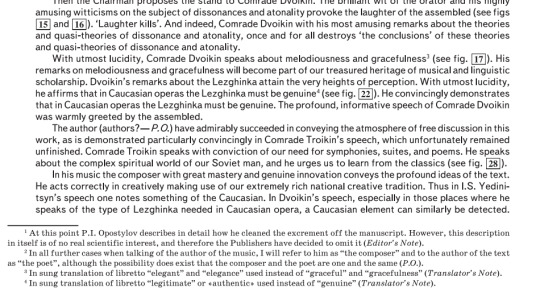

also, this is the best performance of rayok I've ever seen. just. just watch it
would highly recommend reading yabukov's analysis btw. it's WAY more comprehensive than this post, which tbh is just scratching the surface.
66 notes
·
View notes
Text
apparently last night i fell asleep during the second movement of the shostakovich viola sonata and then i proceeded to sleep through shostakovich's WHOLE 11th SYMPHONY. even with the FUCKING LOUD MASSACRE section in the 2nd movement and the BOMBASTIC FINALE i slept through the whole thing ig 🤷
17 notes
·
View notes
Text
Celeste - Kevin Block

Here's a Kevin Block from Celeste - one of those blocks that go zoom when you dash into them. There's a fun, GDQ-related Easter egg related to these blocks (it makes them laugh like Covert Muffin)
Happy Fan Art Friday, everyone
13 notes
·
View notes
Text

i drew this duchamp x shostakovich for @shostposting a good while back. It’s my wallpaper now
13 notes
·
View notes
Text
ok i obviously couldnt take a picture at the time because i was in this woman's house being paid to watch her small children but last night i was babysitting for these kids who are like just learning to read and when the older one was very excitedly showing me his bedroom i almost died because he had clearly been trying REALLY hard to write the word "frog" on his wall with letter stickers but. well what he had actually done was

3K notes
·
View notes
Text
Shostakovich and Sollertinsky in a nutshell
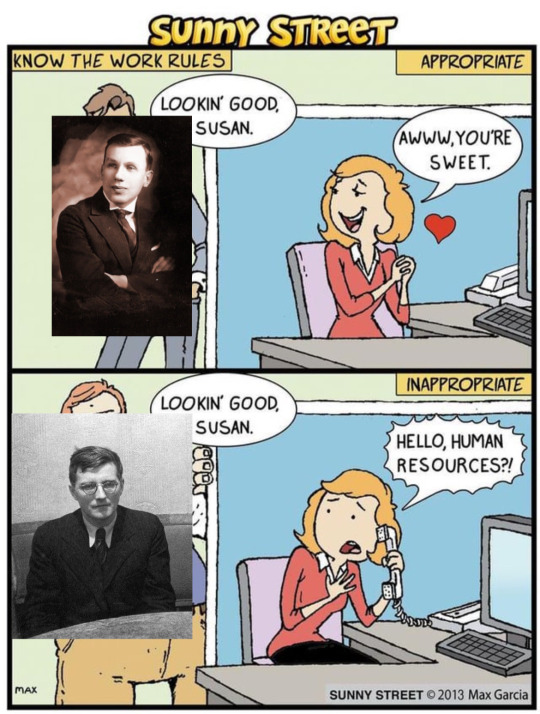

Article the excerpt came from: https://www.academia.edu/85290435/Composing_a_Self_Creative_Subjectivity_in_Dmitri_Shostakovichs_Letters_to_Ivan_Sollertinsky (2) Composing a Self: Creative Subjectivity in Dmitri Shostakovich's Letters to Ivan Sollertinsky
14 notes
·
View notes
Text
Emergency Emergency EmergencyMy campaign was scammed and all the money for my child's treatment was stolen. I have set up a new campaign to save my child.😭🙏🏻
Help! All donations have been stolen without any mercy or compassion for my daughter's condition. She is dying. The campaign owner seized the money. If we receive anything, please cooperate with me to save her. Do not leave my daughter struggling with death and time running out before my eyes.

❗Humanitarian appeal❗ Help me😭All donations were stolen without any mercy or compassion for my daughter's condition. She is dying. 🙏🏻The campaign was defrauded. The campaign founder seized the donation money after it became $6,000 and deprived her of the cost of treatment.Help us, don't leave my daughter fighting for her life. Time is running out before my eyes. The war has returned. We left without anything, no food or shelter. I have no money to buy what my children need. I apologize for sending my message directly. I know you are receivingSo many messages asking for help, but the truth is, my daughter is about to die if she doesn't get her medication. Kidney disease is a chronic, silent illness that will steal my joy. Please donate 😭🙏🏻 My daughter suffers from kidney failure and autism,Physically and mentally disabled. I'm asking for $25 or $50 🙏🏻💔 If you can, your support is a lifeline for her. If you can't, share so someone can give us even a little 😭
🟥This is my new campaign. Please donate here 🙏🏻⤵️






🛑Donate to my new campaign above. ⬆️🙏🏻This campaign is vetted by association as explained here @gazavetters @90-ghost :
1K notes
·
View notes
Text
the dsch motif appears 4 times in dépèche-mode arr. whitacre - “enjoy the silence”
5 notes
·
View notes
Text
a woman being feminine is right-wing coded which is masculine coded. a woman being masculine is left-wing coded which is feminine coded. this disproves the existence of women
26K notes
·
View notes
Text

Went to run my side business, ended up spending money at other people's businesses (of course). Had this cutie made.
20 notes
·
View notes
Text
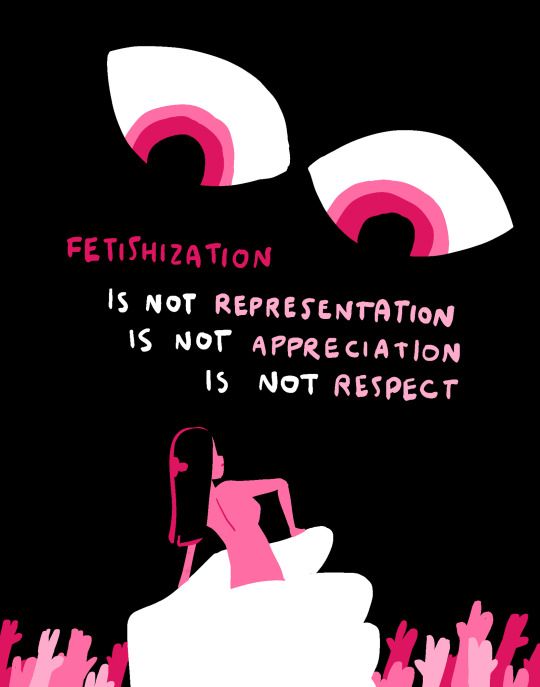

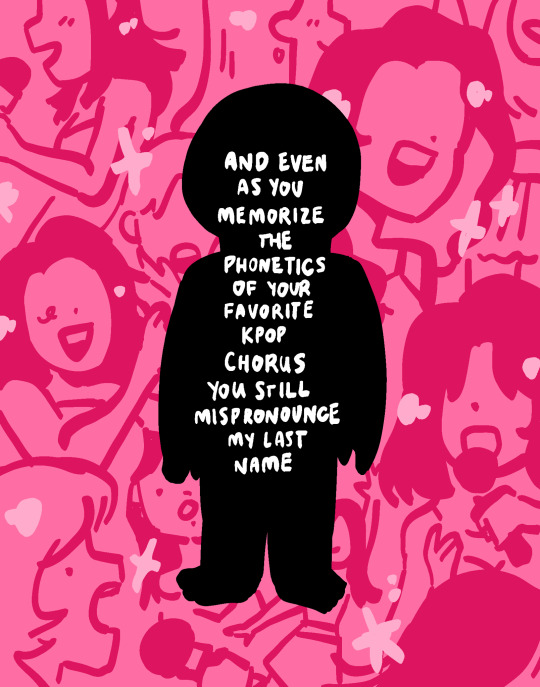

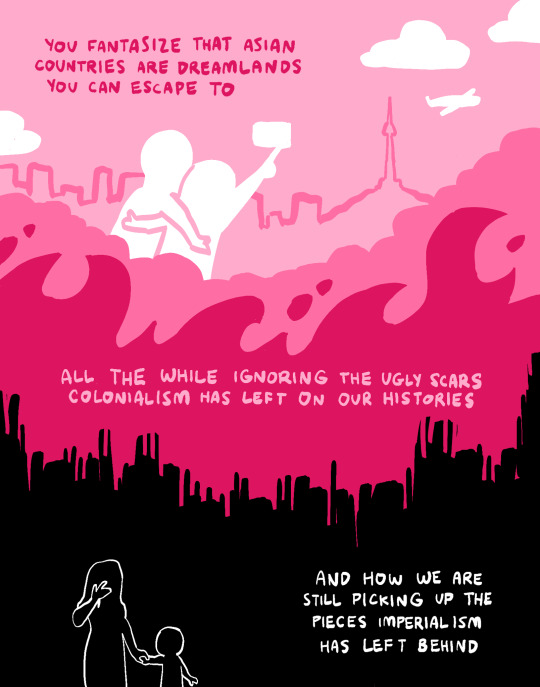
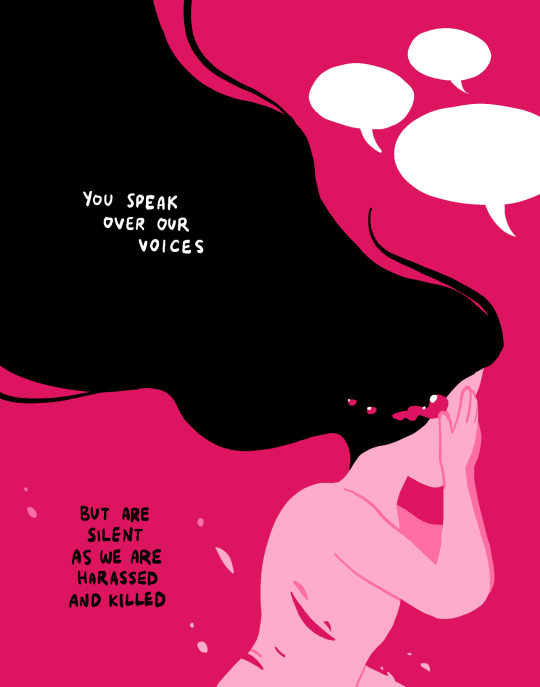
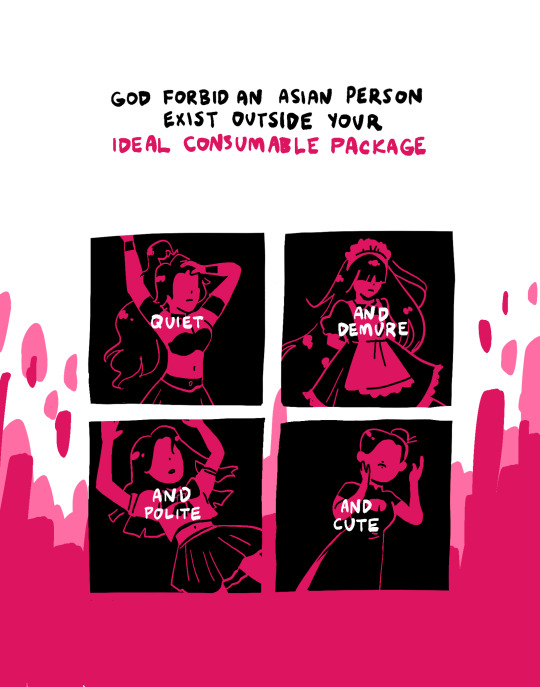

I Am Not Your Asian American Doll: a comic for AAPI Heritage Month 2023
I usually spend a lot of time editing and fine-tuning my comics so that they come across as polite and inoffensive. But honestly, I’m really tired of the way Asian cultures and countries are treated / talked about while Asian people themselves are excluded, and thought it was about time I really let my rage out lol.
id in alt
138K notes
·
View notes
Text

FOR SLEEP???? SHOSTAKOVICH STRING QUARTET NO. 8?? FOR SLEEP??????????
31 notes
·
View notes

